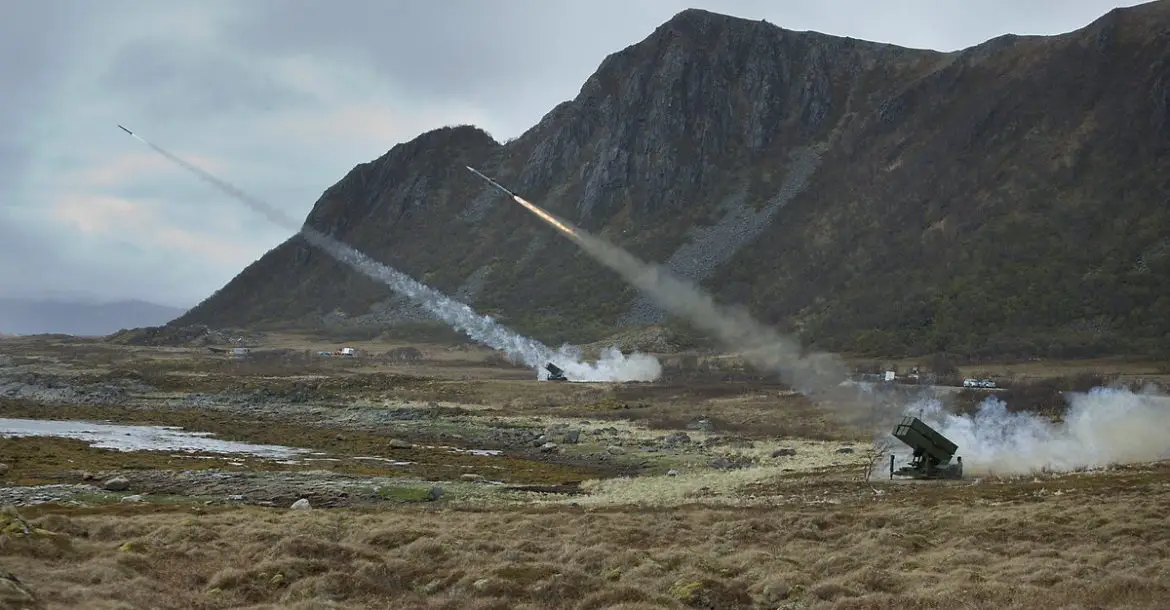The U.S. State Department has made a determination approving a possible Foreign Military Sale to the Government of Kuwait of the National Advanced Surface-To-Air Missile System (NASAMS), Medium Range Air Defense System (MRADS) and related equipment for an estimated cost of $3 billion. This proposed sale will support the foreign policy and national security objectives of the United States by helping to improve the security of a Major Non-NATO ally that has been an important force for political stability and economic progress in the Middle East. The proposed sale will improve Kuwait’s capability to meet current and future threats by enhancing the ability to defend itself against regional malign actors and improve interoperability with systems operated by U.S. forces and other Gulf countries. Kuwait’s continued investment in its defensive capabilities is crucial to protecting its borders, energy infrastructure, and its residents, including over 4,000 U.S. citizens and military personnel living and working in the country. Kuwait will have no difficulty absorbing this capability into its armed forces. The proposed sale of this equipment and support will not alter the basic military balance in the region. The principal contractor will be Raytheon Missiles and Defense, Tucson, AZ.
The move paves the way for Kuwait to get the NASAMS. The weapon is manufactured as a joint venture between U.S.-based Raytheon Technologies and Norway’s Kongsberg Defence and Aerospace, though the principal contractor on the Kuwait sale is Raytheon. NASAMS is in operational use in Norway, Spain, USA, the Netherlands, Finland and one undisclosed customer. The system is in production for Oman, Lithuania, Australia, Hungary and Qatar. NASAMS is in use with both Armies and Air Forces around the world. In addition Indonesia, Poland, Greece, Sweden and Turkey operate the Kongsberg Command and Control solution for various weapon systemsThe Pentagon announced in July that it would purchase NASAMS for Kyiv with $770 million in aid from the Ukraine Security Assistance Initiative. The long-term goal is wean Ukrainians off the Soviet-era air defense systems that it has so far used to repel Russian attacks. Still, it will take several months or years for Kongsberg Defence and Raytheon to manufacture the system for Ukraine.

The Government of Kuwait has requested to buy the National Advanced Surface-To-Air Missile System (NASAMS), Medium Range Air Defense System (MRADS) solution comprised of: seven (7) AN/MPQ-64FI Sentinel radars with associated support equipment; sixty-three (63) AIM-120C-8 Advanced Medium Range Airto-Air Missiles (AMRAAM); sixty-three (63) AMRAAM-Extended Range (AMRAAM-ER) missiles; two (2) AIM-120-C-8 AMRAAM Guidance Sections; sixty-three (63) AIM-9X Sidewinder Block II tactical missiles; six (6) AIM-9X Block II tactical missile Guidance Units; twelve (12) Multifunctional Information Distribution Systems – Low Volume Terminal (MIDS LVT) Block Upgrade 2; and twelve (12) MIDS LVT Cryptographic Modules (LCM). Also included are Fire Distribution Centers (FDC); Canister Launcher Systems (CLS); Tactical Control Center (TCC) Systems; FDC Indoor Training Simulator; Radar Communication Nodes; MIDS LVT BU2 Link 16-capable radios; IPS-250X High Assurance Internet Protocol Encryptions (HAIPE); KIV-77 Identification Friend-or-Foe (IFF) Crypto Applique to provide Mode 5 and Mode S capability; AN/PSN-13 Defense Advanced Global Positioning System (OPS) Receivers (DAGR) with Selective Availability Anti-Spoofing Module (SAASM); AN/PYQ-10 Simple Key Loaders (SKL), Code Loaders and Cable Sets to allow crypto keying capability for each IFF, OPS, and MIDS radio; AIM-120 control sections and containers; AMRAAM and AMRAAM-ER Captive Air Training Missiles (CATMs); weapon system support and support equipment.
NASAMS (Norwegian Advanced Surface-to-Air Missile System, also known as the National Advanced Surface-to-Air Missile System) is a distributed and networked short- to medium-range? ground-based air defense system developed by Kongsberg Defence & Aerospace (KDA) and Raytheon. The system defends against unmanned aerial vehicles (UAVs), helicopters, cruise missiles, unmanned combat aerial vehicles (UCAVs), and aircraft. NASAMS to protect the airspace over the White House and the Pentagon. NASAMS was the first application of a surface-launched AIM-120 AMRAAM (Advanced Medium Range Air-to-Air Missile). NASAMS 2 is an upgraded version of the system capable of using Link 16, which has been operational since 2007. As of 2022 NASAMS 3 is the latest upgrade; deployed in 2019, it adds capability to fire AIM-9 Sidewinder and IRIS-T SLS short-range missiles and AMRAAM-ER extended-range missiles, and introduces mobile air-liftable launchers. NASAMS has proven interoperability with longer range systems such as Patriot.















